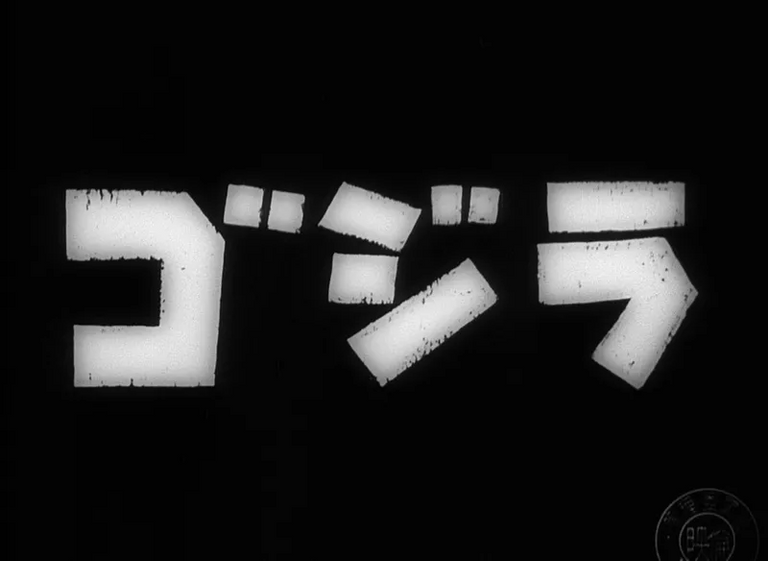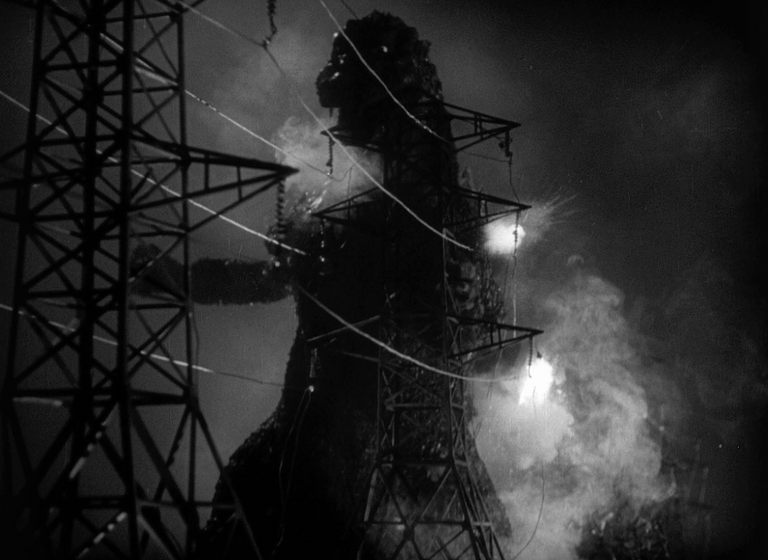
The original Godzilla film, whether in the original Japanese which we're looking at here today or in the American version, isn't the first giant monster movie ever made, but it is the one that led to Toho pioneering the use of what they called "suitmation" instead of stop motion for depicting giant monsters ravaging the world which formed the basis for what is usually called the "Kaiju" genre of film.
Other entries in the genre might be light-hearted, aimed at children, or even satirical, but Gojira is a deadly serious film with a lot to unpack.
There are two elements that lie at the core of Gojira. First there is the monster himself. Inspired by a real incident of ship getting too close to a nuclear test site, Godzilla is a metaphor for nuclear war and is shown inflicting the same kind of horror on Japan as it experienced at the end of the Second World War. Second is a love triangle between three characters that we'll talk about later.
For me, and likely a lot of other people, this is the first introduction to a lot of actors who are familiar faces in Toho Studios films and the introduction of afore-mentioned suitmation style of filming by Toho. While this movie was inspired by the success of Warner Bros's The Beast From 20,000 Fathoms which used stop motion, Toho decided that it was too expensive and slow to film. Instead they use a stuntman inside of a suit filmed against miniature sets.
The effect can look rather fake, but the director, Ishiro Honda, uses camera trickery, well-composed shots, black and white, and extensive use of darkness to hide many of the defects. Even though it's obvious it's a man in a suit, or toy ships being destroyed, the film pulls off atmospheric shots that make Godzilla really feel like the destructive force he's meant to be.

Thematically one of the key points of the movie is that the military and all of its might are in fact impotent when faced with Godzilla, the living embodiment of nuclear power. It's only at the end that science provides a means of destroying the monster, a means that could lead to a weapon even more deadly than the original monster itself.
Meanwhile, we learn about the love triangle between a young man working for one of the company's whose ships Godzilla has been destroying, a scientist, and the woman who's torn between them. Akira Takarada's Hideto Ogata, the shipping company employee, is earnest and courageous. He's in love with Emiko Yamana, daughter of a scientist who factors into the movie. And she is engaged to a another scientist, Dr. Serizawa. It's their love triangle and the resolution of it that provides Dr. Serizawa with the determination to use his secret invention to stop Godzilla, and also to keep his secret invention from falling into the hands of the government.
I won't show it here, but the revelation of just what his invention, the oxygen destroyer, does is startling and still holds up after so many decades.
At the end of the film, of course the monster is destroyed. The young lovers can be together. But the characters and their world are left in an uncertain state, faced with future unknown horrors. Is Godzilla really dead? Will nuclear arms unleash further horrors? Will the secret of the Oxygen Destroyer be found again and will it bring about the destruction that Dr. Serizawa fears?
A serious and somber film, Gojira is a great way to explore some complicated themes while showing some stark and beautiful visuals. As a kid it was frightening and cool, as an adult there are more layers to enjoy.
I rate this film 10 Godzillas.